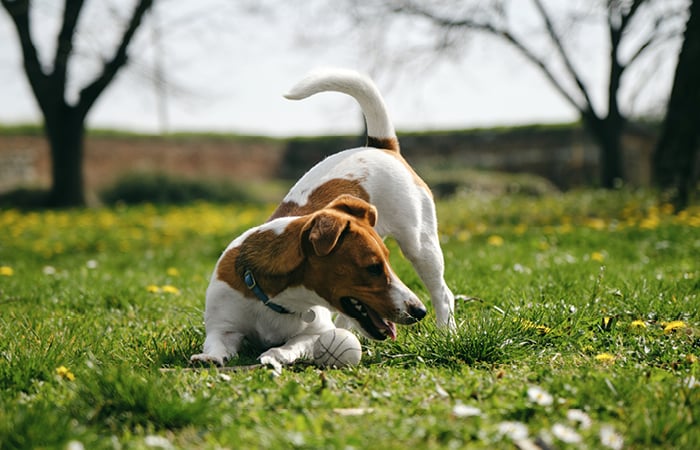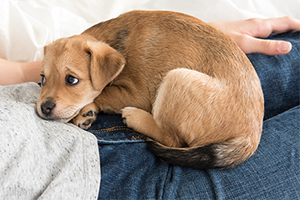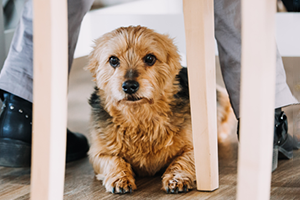When dogs are feeling low, they can show signs that are strikingly similar to us – pulling away from social interactions or losing interest in their usual activities. Recognising these signs can help you determine if your dog is experiencing stress, anxiety, or, in some cases, depression.
If your dog is hiding away more often than usual, it could be a sign they’re avoiding social contact because they’re feeling unwell or anxious. Pay attention to changes in their behaviour, such as a lack of interest in food or treats – this could be another indication they’re not in the best headspace.
Body language is another important clue. A tense posture, a tail tucked tightly under their body, flattened ears or lip-licking are all subtle signs that your dog is no longer relaxed. Some dogs may also groom excessively in one spot as a way to self-soothe.
If your dog’s fear escalates, their behaviour may become more obvious, showing up as restless pacing or even uncharacteristic aggression. If you’re concerned, and you have dog insurance with Petplan, you can access our Pet Expert Chat through your My Petplan account for personalised behavioural advice.

















